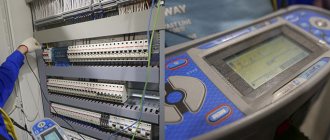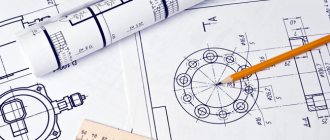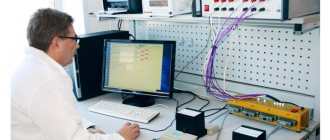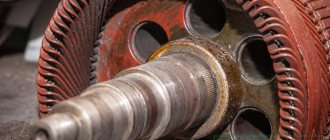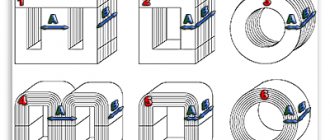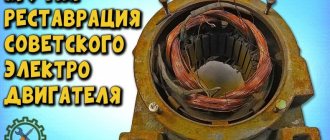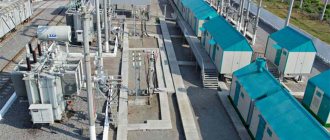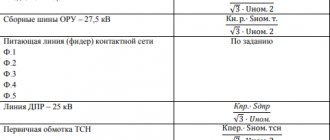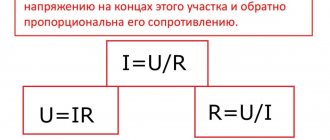A power transformer is a complex piece of equipment that requires periodic maintenance. This allows you to ensure its stable operation for a long time. Major and “current repairs of power transformers” are carried out at a certain frequency and according to an established scheme. “Between overhaul tests of the power transformer” are also carried out. Features of maintenance and repair of the presented units will be discussed further.
Varieties
There are several types of power equipment repairs. If you need to service a large high-power device, for example, 1600 kVA, 2500 kVA, 6300 kVA, etc., you cannot do without special skills. Special equipment should only be inspected and repaired by a qualified professional.
The following types of repairs are distinguished:
- Maintenance. Produced according to the schedule established by regulations. In this case, the operation of the equipment does not stop.
- Routine repair of power transformer. Requires disconnecting the device from the network. Refers to preventive actions.
- Overhaul of transformers. Measures are taken to eliminate malfunctions that arose during operation of the unit, as well as in case of aging and wear of the system. After 10–15 years of operation of the installation, it must be reconstructed.
In addition to the presented actions, between-repair and “post-repair” tests are carried out. For devices with a power of more than 110 kV, the first major maintenance is required 12 years after the start of operation. For other varieties, similar actions are performed based on test results and general condition.
Inspection of “power oil transformers” and units with an oil cooling system such as “TSZM”, “TSZN” and other varieties that contain adjusting elements (OLTC) is required once a year. For devices without an on-load tap-changer, this type of maintenance is performed every two years.
For other types, maintenance is required at least once every four years. There are also special instructions. They are used in places of increased pollution.
Overhaul tests are carried out in accordance with the rules established by the PPR (works project).
Prices
The cost of work for overhaul, current and preventive repairs (inspection) of power transformers TM, TMG, TMZ, TMS (dry, oil) on-site installation in a transformer substation under the contract.
| Power | Preventive maintenance* Price, rub. | Repair kit Price, rub. |
| 40 kVA | from 15 000 | from 3 000 |
| 63 kVA | from 15 000 | from 3 000 |
| 100 kVA | from 15 000 | from 3 000 |
| 160 kVA | from 16 000 | from 3 500 |
| 250 kVA | from 18 000 | from 3 500 |
| 400 kVA | from 20 000 | from 4 000 |
| 630 kVA | from 24 000 | from 5 000 |
| 1000 kVA | from 33 000 | from 6 000 |
| 1250 kVA | from 35 000 | from 7 000 |
| 1600 kVA | from 50 000 | from 9 000 |
| 2500 kVA | from 67 000 | from 11 000 |
| 4000 kVA | from 115 000 | from 25 000 |
* Price for urgent repairs of high-voltage power transformers 6 kV, 10 kV, 35 kV, 110 kV. After diagnosis, measurements are taken and a test report from the electrical laboratory is issued.
Maintenance
The maintenance process is carried out at certain intervals. The procedure is clearly regulated. It includes several mandatory steps:
- Inspection of the “transformer” device from the outside, identifying possible malfunctions and damage to the housing.
- Cleaning the tank and insulators.
- Elimination of dirt deposits in the expander.
- Add “oil” (if necessary), examine the condition of the coolant level indicator.
- Thermosiphon type filters are inspected. If necessary, the sorbent is changed in them.
- The condition of the circulation pipes, fuse, seals, and welds is assessed.
- For a device with an oil cooling system, samples of the internal fluid are taken.
- “Power transformers are tested” and the main indicators of their operation are measured.
Using a certain technology, the condition of the installation is assessed after maintenance.
Current repairs with dry cooling type
Equipment with dry cooling type has cast insulation. It is easy to use and not fussy. Maintenance of such a device is carried out according to established regulations. Its points depend on environmental and operating conditions. The process is carried out according to the following scheme:
- The cooling system should be checked every six months. If fans (forced ventilation) are installed in the structure, the quality of their operation must be assessed. It is important to determine the performance of the temperature controller.
- The surface of the device is cleaned of various contaminants. This procedure is carried out once every quarter or six months. If the environment has a high level of pollution, cleaning is carried out more often.
- Once a year the hull is examined for cracks. If necessary, they should be eliminated immediately.
- The integrity of insulation and protection of metal structural elements is checked. The inspection is performed once a year.
- The fixation of the winding must be strong. It is checked during technical inspection. If damage is detected in the cast winding, it is completely replaced.
Caring for dry type devices requires less effort and time. This is due to the lack of liquid in the system, the condition of which must be constantly monitored. Oil varieties need to be examined more carefully.
Drying and impregnation of windings
Until about the 60s, electrical engineering factories and repair shops impregnated transformer windings. Then VEI scientists proved that impregnation improves the electrical insulating properties of windings very little, and in order to simplify the technology for manufacturing windings, impregnation with varnishes was recommended. Currently, almost all electrical engineering plants do not impregnate transformer windings. However, it should be noted that impregnation of the windings improves the mechanical strength of the windings. With conventional impregnation, the varnish penetrates the first 2...3 layers of the winding and partially cements it. When using ultrasound to impregnate windings, the varnish penetrates more deeply into the insulation, and the insulation characteristics and mechanical strength of the windings are noticeably improved. It is necessary to dry the transformer windings both when replacing them with new ones and after repairing them. This can be done both in stationary furnaces and at the transformer repair site. Drying can be carried out using vacuum (more advanced drying) or without it, in the presence of natural or artificial ventilation. Heaters in stationary furnaces can be very different: steam, induction, electric. The most commonly used are electric heaters; they are usually calculated using empirical formulas. For example, where Pnag, Sh is the power of the heater (kW) and the rated power of the transformers simultaneously subjected to drying, kVA. The fan flow (m3/h) is determined from the calculation of QB = 0.6 Rya at a furnace temperature of about 100°C, an ambient air temperature of 10...15°C and a furnace volume of 2.5...3.5 m3. The surface of the heater is determined from the expression. Using the same expression, the material of the heater is selected and all its other characteristics and the power of the furnace are obtained. Drying of the transformer in its own tank can be done with hot oil with filtration of the latter, hot air from the heater (blower), short circuit current, losses in the tank (using a magnetizing winding) and zero sequence current. The last two drying methods are most widespread. They are described in some detail in the workshop for laboratory work. Progressive methods include drying by infrared irradiation. It can be carried out using a stationary chamber with or without heaters, indoors or outdoors. Heating is carried out by infrared lamps with mirror reflection, which are mounted in portable sections on all sides of the active part of the transformer at a distance of at least 300 mm. The energy density of one lamp is 0.3 W/cm2, reaching 0.4 W/cm2 for large lamps. In transformers of sizes I and II, the total power of the lamps required for drying ranges from 6 to 12.6 kW, the drying duration is from 18 to 28 hours. With this drying method, moisture moves from the inner layers to the outer, which speeds up the drying process. The disadvantage of this method is the scarcity and high cost of infrared lamps. If necessary, you can use incandescent lamps with a power of 20% more, but with a supply voltage supplied to them 10% lower than the nominal one.
Current repairs with oil type cooling
The complexity of routine troubleshooting of a device with an oil cooling system depends on the complexity of its design and operating features. The composition includes a tank filled with oil. This structural element requires special attention. Maintenance is carried out according to the following scheme:
- The process is carried out without transporting the unit, at the place of its installation.
- The body is inspected and external defects are identified.
- Minor faults in the fittings, cooling system and hanging units are eliminated.
- The fasteners are tightened tighter. If there is a leak, it must be sealed. Oil is added.
- The silica gel in the thermosyphon filter is changed.
- The body is cleaned of dirt.
- The resistance of the insulating material on the windings is measured.
Video: Routine repair of a 35 kV power transformer
The above steps are completed within 1–2 days. In this case, the working part of the transformer is not affected.
Electrical installation and commissioning works
Before submitting documents for approval of a power oil transformer or package transformer substations for operation at Rostekhnadzor, it is necessary to carry out intermediate acceptance of equipment components, installation and commissioning of individual systems, acceptance and delivery of equipment, and a comprehensive test (72 hours of continuous operation of the electrical installation). In this case, all standards specified in the current PUE, PTEEP, as well as building codes and regulations (SNiP), GOST, instructions from manufacturers, and equipment installation instructions must also be observed.
Major renovation
Overhauls of power transformers include the entire list of routine maintenance work, as well as the elimination of possible malfunctions of the “windings,” core, and switches. During this procedure, the winding connections at the terminals and points of contact with the voltage switch are inspected. The condition of the oil tank, pipelines, expanders, and conclusions is examined.
In Russia, a major type of maintenance can be deep or involves opening the oil tank. This is a complex procedure that must be performed by trained professionals.
Video: Overhaul of 110 kV transformer
Deep overhaul
During a major restoration, the equipment is disconnected from the network. If deep maintenance is required, a number of sequential actions are taken:
- The installation housing opens.
- The active part rises.
- The windings are disconnected from the magnetic drive.
- The coils are rewound in accordance with the design features.
- The main insulation is restored or completely replaced.
- The functioning of the magnetic system is adjusted.
- Bends, inputs, coolers and switches, fans, oil pumps and oil shut-off valves are subject to replacement or restoration.
This is a complex process that requires highly qualified craftsmen, regardless of the type of device. In some cases it will be necessary to open the oil tank. To do this, after carrying out the above steps, you need to dry the working part. The tank is examined at a special site. In this case, the power must be completely turned off.
Acceptable methods of transportation, depending on the type of TB
- Large-sized TB (more than 90 tons) in disassembled form. All leads, expanders, and filter units are disconnected. The oil tank must be filled with some inert gas;
- TB weighing up to 90 tons are also transported partially disassembled, but have a number of assumptions. The tank can be initially filled with oil for ease of subsequent installation;
- Small transformers can be transported fully assembled and filled with oil. Immediately after shipment they can be mounted on the mounting location.
Requirements for the road surface are also given. It should be level and have a slope of no more than 7. Its size is very important, because the lack of proper space for maneuvering the car can lead to additional problems.
Prevention trials
Testing the operation of equipment after prevention also goes through a number of successive stages. First of all, the conditions for turning on the device are studied. “Winding” resistances are measured. Next, the deviation of the dielectric losses of the insulation of the coils is measured.
At the next stage, the correct operation of the equipment is determined when connected to an industrial frequency of increased power. The resistance of the windings at direct current is studied. The transformation ratio is checked.
If the unit is of the three-phase type, the group of its connections is checked. When testing single-phase devices, their polarity is measured. Current indicators and no-load losses are studied.
Then the switch, tank and radiators, cooling devices, and indicator are checked. Tests of inputs and built-in currents are carried out.
Turnkey replacement
Turnkey replacement of a transformer in SNT includes:
- removing the old one (to do this you need to call an electrician who will remove the meter);
- dismantling old equipment;
- delivery of new equipment (new single-phase or three-phase, to order)
- installation in place of the dismantled one - connection to a 220V network
- checking and commissioning of new equipment by a specialist
- payment for specialist services.
Such a turnkey replacement can be either a one-time procedure or a regular preventive measure. If we are talking about replacing single-phase or three-phase equipment, then this procedure will be periodic, but with the replacement of meters, automatic machines and other elements that are connected to the network every month. For a single-phase system, it is enough to replace one element with another, but three-phase equipment requires more serious testing and installation on each site or in the house.
Emergency situations
In some cases, the inspection may be carried out in an emergency situation. It may occur when strong crackling or uneven noise is detected inside the housing. The equipment requires unscheduled inspection if the heating level is abnormal. It may gradually increase.
In some cases, oil is released, leaks (the liquid level drops below the permissible value), and the diaphragms of the expansion pipes are destroyed. In this case, the installation cannot function normally. It is required to perform its emergency recovery.
Oil samples may be taken after maintenance or during testing. If the quality of the substance is unsatisfactory, the power is turned off. An emergency fluid change is in progress.
Output for repair of a power transformer sequence
The task and features of grounding transformers.
During operation, any transformer, step-down or step-up, is taken out of operation emergency in the following cases:
- Internal crackling, which is characteristic of an electrical discharge between two oppositely polarized conductors;
- Abnormal or uneven noise that occurs both with and without load;
- In case of unreasonable heating, which increases even with rated load and proper cooling;
- In case of oil emissions, which can be from the expander or from a damaged exhaust pipe diaphragm;
- In case of severe oil leakage, as well as when the minimum permissible level is reached;
- After receiving bad results from a chemical analysis of the oil from the laboratory.
The sequence of actions of personnel when taking a transformer out of service for repair is clearly regulated and signed. Depending on local conditions and the switching circuit of the transformers, these switchings may differ slightly from each other, but the basic logical chain still remains the same. The main thing is that they must be carried out without consequences for the powered equipment and for sources consuming electricity, and also safely, that is, using both basic and additional personal protective equipment.
Here is the sequence of shutdowns and switchings in the circuit of a step-down three-phase oil or dry transformer of a substation in order to take it out for repair:
- If there is a sectional disconnector and an oil switch on the low side, then to ensure uninterrupted power supply to power consumers. in this case, the disconnector is turned on first and only then the sectional oil switch;
- The oil switch is turned off on the low side. Now both sections are powered by one transformer, which will power both sections during the repair of the other. Naturally, this is if there are only two of them, like transformers;
- The input oil switch is turned off, that is, on the high side;
- Now it is possible to provide a visible break to the power buses of a transformer being taken out for repair by disconnecting the linear or bus disconnectors;
- Portable grounding connections must be installed on the low and high sides, naturally, after directly checking the absence of voltage and posting safety posters.
After that, a team is allowed to visit the transformer being repaired, in compliance with all organizational and technical measures.
Abnormal humming
If an abnormal hum is detected inside the case, there may be several reasons for this condition. It is caused by loosening of cover bolts or other parts. They will need to be tightened.
With increased voltage in the network, noise may appear. To fix it you will need to move the switch to the correct position. If the pressing is broken, a humming noise appears at the joints inside the magnetic circuit. The core will need to be repressed. If the outermost sheets of the magnetic circuit begin to vibrate, noise may be heard. They need to be wedged.
Humming is also caused by equipment overload (it needs to be reduced), uneven loading of phases or a short circuit between them or winding turns.
In addition to the listed faults, breaks may appear in the turns of the coils if they are connected poorly. If a similar situation is detected in the primary winding, a change in the secondary voltage will occur.
To determine the scope of work in an emergency situation, a transformer defect detection process is carried out. This allows you to determine the severity and nature of the damage. Based on the analysis, the need for materials, devices and tools necessary for troubleshooting is established.
Power transformers, like any equipment, require periodic maintenance. To avoid the need to troubleshoot in emergency mode, periodic technical inspections and a set of capital measures are carried out to restore system elements.
Advantages of contacting Energotrest
The company focuses on a wide variety of audiences and is ready to expand cooperation, so prices are comfortable for different customers.
Energotrest uses only high-precision and high-quality equipment so that there are no complaints about the work, and operation is problem-free and uninterrupted. Our devices meet all quality standards, and our employees are highly qualified and have extensive experience in their field.
When contacting Energotrest, you can be sure not only of the quality of work, but also of efficiency. We work for you!
